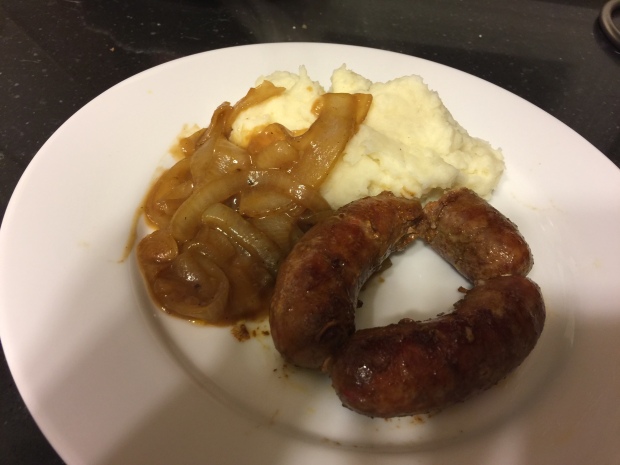Fabio’s American Home Kitchen
Fabio Viviani
What drew me to this recipe was the Salmoriglio sauce. Simply put, it looked interesting. So I figured, why not! And I will admit that as this was cooking, I had my doubts about whether or not I was even going to like this once it was done. But it looked interesting, so why not. They can’t all be winners, right? Besides, for me, this all started to try and find new ways of making the same old thing. But first, a few tweaks…
The roast itself was very good and very tender and juicy. However, if and when I make this particular roast again, I would tweak the sauce a bit. I would go with a little less garlic, more pine nuts, and more lemon juice. And maybe reduce the olive oil from one cup to, maybe, ¾ of a cup. Other than that, it was quite good.
Just a quick tip about the cooking process. Check the roast about halfway through for the level of liquid in the pot. If you see that it’s getting too low to the point where it’s completely evaporated, add a little more stock to keep it moist.
My apologies for only having one photo of this recipe. I forgot to snap a few pics of the prep process so all I did was take a pic of the finished product.

Ingredients:
Pork
One 4-pound boneless pork shoulder
½ cup kosher salt
2/3 cup sugar
3 tablespoons fresh oregano
3 tablespoons fresh thyme
10 anchovy fillets, chopped
Freshly ground black pepper
3 tablespoons olive oil
½ cup beef or vegetable stock
Salmoriglio Sauce
3 garlic cloves, minced
¼ cup pine nuts
2 shallots, finely minced
10 fresh mint leaves, minced
2 tablespoons minced fresh thyme
2 tablespoons minced fresh flat-leaf parsley
Juice of 2 lemons
1 cup extra-virgin olive oil
Kosher salt and freshly ground black pepper
1 tablespoon onion powder
Make the Pork: Rub the pork with salt and sugar, wrap it in plastic wrap, and let it rest overnight in the refrigerator.
Preheat the oven to 300°F.
With a wet cloth, wipe the remaining sugar and salt from the pork. Put the oregano, thyme, anchovies, and a pinch of salt and pepper in a food processor and blend into a fine paste. Rub the paste all over the meat.
Pour the olive oil in a pro or casserole large enough to hold the pork and turn the heat to medium. Add thereat and brown it on all sides. Add the stock, cover the pot and transfer it to the oven. Roast the pork until it is fork-tender, about 3½ hours.
Make the Salmoriglio Sauce: Combine the garlic, pine nuts, shallots, mint, thyme, parsley, lemon juice, olive oil, salt, pepper, and onion powder either in a food processor or in a town with a whisk.
To serve, slice the meat in thick slices (a serrated knife works well) and drizzle with the salmoriglio.





























